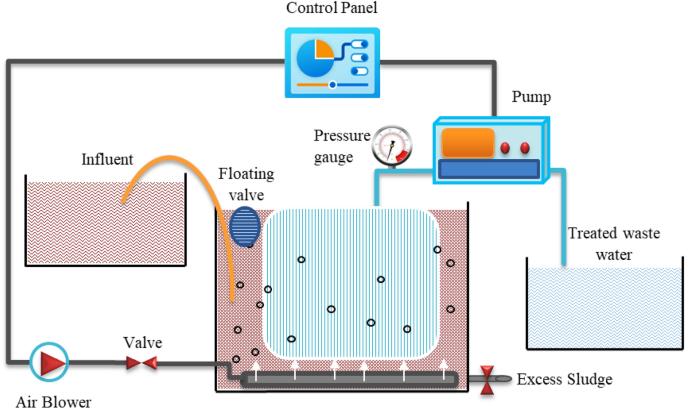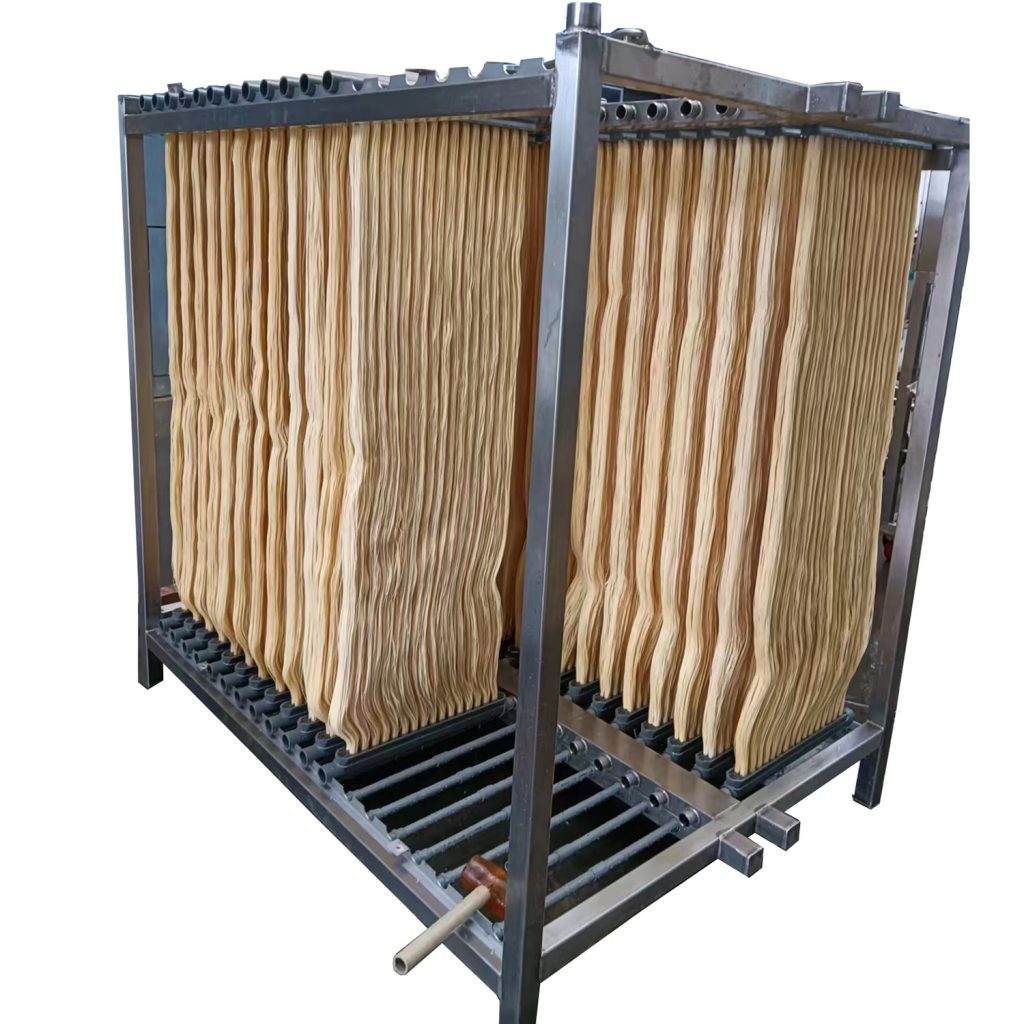How Membrane Bioreactor Contributes to the Reduction of Energy Consumption in Water Treatment
How Membrane Bioreactor Contributes to the Reduction of Energy Consumption in Water Treatment
Blog Article
Membrane Bioreactors Explained: Reliable Solutions for Tidy Water
Membrane bioreactors (MBRs) have actually arised as an advanced solution for attending to the pressing challenges of wastewater therapy. By integrating biological processes with sophisticated membrane layer purification, MBRs not just improve the high quality of cured water yet also reduce the spatial requirements of treatment centers. As environmental issues escalate, the function of MBR modern technology in advertising lasting water administration comes to be progressively substantial. The intricacies of their operation, benefits, and potential applications merit a closer examination to fully understand their effect on the future of water treatment.

What Are Membrane Layer Bioreactors?
Membrane bioreactors (MBRs) are innovative wastewater treatment systems that incorporate organic deterioration processes with membrane purification technology. This integration enables the effective elimination of pollutants from water, making MBRs a recommended selection in various applications, including community wastewater therapy and industrial effluent management.

Among the critical benefits of MBRs is their capability to create high-quality effluent, typically appropriate for reuse in watering or commercial procedures. In addition, MBRs call for a smaller sized footprint contrasted to traditional treatment systems, making them ideal for city settings where room might be restricted.
Furthermore, MBRs can successfully manage varying influent lots and are less at risk to the impacts of toxic shocks. These characteristics contribute to their expanding popularity as a sustainable solution for addressing the enhancing demand for tidy water while reducing ecological impacts.
Exactly How Membrane Bioreactors Work
While the procedure of membrane bioreactors (MBRs) may appear facility, it essentially focuses on the synergy between biological processes and membrane layer filtering. MBRs incorporate a biological therapy procedure, typically turned on sludge, with a membrane layer splitting up unit to treat wastewater successfully.
In an MBR system, wastewater is initial presented right into a bioreactor where bacteria weaken raw material and other impurities. The biological activity decreases the focus of pollutants while advertising the development of biomass. Following this biological treatment, the blended alcohol goes through membrane layer purification, which can be microfiltration or ultrafiltration, depending on the preferred effluent quality.
The membranes act as a physical obstacle, enabling water and tiny solutes to pass while retaining suspended solids and bigger particles. This makes it possible for the system to preserve a high focus of biomass within the activator, boosting the therapy effectiveness.
Moreover, the constant splitting up of treated water from the biomass facilitates a compact style and minimizes the impact of the treatment center. In general, the mix of organic degradation and membrane layer filtration in MBRs results in reliable and dependable wastewater therapy, making certain high-grade effluent appropriate for numerous applications.
Benefits of MBR Modern Technology
One of the vital benefits of membrane layer bioreactor (MBR) technology is its capability to produce top quality effluent with a considerably lowered footprint contrasted to traditional wastewater therapy methods. MBR systems properly combine organic treatment and membrane layer filtering, resulting in premium removal of impurities, including suspended solids, virus, and natural issue. This capacity brings about effluent that usually meets or surpasses rigorous regulative requirements for reuse and discharge.
Additionally, MBR modern technology permits greater biomass concentrations, which improves the treatment performance and minimizes the required activator quantity. This compact design is specifically helpful in urban areas where room is restricted. The functional adaptability of MBR systems likewise means they can adapt to varying influent top qualities and circulation prices, making them appropriate for a broad range of applications.
Additionally, the minimized sludge manufacturing associated with MBR processes adds to reduce operational and upkeep prices. The membranes function as a physical obstacle, decreasing the threat of obstructing and making it possible for longer functional periods in between cleansing. In general, the benefits of MBR technology make it an attractive solution for sustainable wastewater therapy, dealing with both ecological concerns and the requirement for efficient source management.
Applications of Membrane Layer Bioreactors
With their adaptability and performance, membrane layer bioreactors (MBRs) discover click here to find out more applications throughout different fields, consisting of community wastewater treatment, industrial processes, and even water recovery. In community settings, MBRs give a small remedy for dealing with wastewater, properly getting rid of contaminants while concurrently creating top quality effluent that satisfies strict governing requirements. This makes them specifically suitable for locations with minimal space.
In industrial applications, MBR innovation is used for dealing with process water, specifically in markets such as food and beverage, pharmaceuticals, and petrochemicals. These sectors take advantage of MBRs' ability to deal with high natural tons and their efficiency in recuperating valuable sources from wastewater, such as nutrients and water.
Moreover, MBRs play an important function in water reclamation campaigns, making it possible for the reuse of dealt with wastewater for watering, commercial procedures, and even as safe and clean water after further treatment (Membrane Bioreactor). Their efficiency in removing toxins and microorganisms makes them a trusted selection for guaranteeing water quality in numerous reuse applications
Future of Water Therapy Solutions
The future of water treatment options is positioned for transformative improvements driven by technical advancement and boosting environmental awareness. As worldwide water shortage becomes a pushing issue, brand-new methodologies, consisting of membrane bioreactor (MBR) systems, are readied to play an essential role in boosting the effectiveness and sustainability of water therapy processes.
Emerging technologies such as synthetic intelligence and equipment understanding are expected to optimize treatment operations, permitting real-time monitoring and anticipating upkeep. This will enhance the general dependability and effectiveness of water treatment centers. Improvements in membrane layer materials, such as graphene and nanofiltration, guarantee to enhance permeation prices and decrease fouling, leading to lower energy usage and operational expenses.
In addition, the combination of renewable power resources right into water therapy plants will certainly add to greener practices. The circular economy design will certainly additionally obtain grip, encouraging the recovery of beneficial resources from wastewater, such as nutrients and power.
Conclusion

Membrane layer bioreactors (MBRs) have actually emerged as a sophisticated service for addressing the pushing difficulties of wastewater treatment. By integrating organic processes with sophisticated membrane layer filtration, MBRs not just boost Visit Website the top quality of cured water but also minimize the spatial demands of therapy centers.One of the essential benefits of membrane layer bioreactor (MBR) modern this page technology is its capability to generate top notch effluent with a significantly reduced footprint contrasted to traditional wastewater treatment methods.With their adaptability and effectiveness, membrane layer bioreactors (MBRs) find applications across different sectors, including municipal wastewater treatment, commercial procedures, and also water reclamation.In conclusion, membrane layer bioreactors represent a significant advancement in wastewater treatment technology, incorporating biological processes with reliable membrane filtration to create high-quality effluent.
Report this page